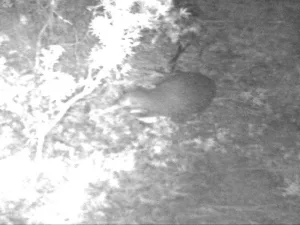Have you been wondering what journey your pottery encounters after you leave your pottery class? This article describes the incredible process your pottery goes through from when you make your unique item in your pottery class at Driving Creek, to your pottery being delivered to your home.
After your class, and once you have moulded the clay into its final shape, the pottery is left to dry to ‘leather hard’. The initial drying process can take up to one week but varies based on how thick the clay is and even what the weather is like. Once the pottery reaches this semi-hard level, it is then trimmed by one of our Pottery Tutors to remove excess clay from the bottom and is then set aside to dry fully.
When the pottery is fully dry it is ready to be bisque fired in a kiln. A bisque firing is where the pots are fired, or more simply baked, in a kiln at 950°C. This firing removes any remaining moisture, which reduces the size by approximately 15%, and makes the pottery more durable and porous enough to absorb glazes.
The bisque firing also makes the pottery pieces stronger and more convenient for handling during the glazing process. The firing takes around 12 hours, and is then left for another 12 hours to allow the pottery to cool slowly.
Once the pots are out of the bisque kiln they are ready to be glazed. Glazing is a truly amazing process where pottery comes to life by adding colour, texture and depth to the surface.
Glazes are made using minerals and oxides that add colour through colouring oxides such as cobalt, copper, iron, chrome, manganese, rutile, nickel, vanadium, and rare earths which are used in our range of pottery class glazes you were able to choose from. You can even change the way a glaze appears through different combinations, layering and techniques.
The glazing process is both a science and an art with many ways of applying a glaze from brushing and dipping, to spraying and pouring, each method alters the final result. The firing temperature, viscosity (thickness) of the glaze and atmosphere inside the kiln all play a role in the final outcome.
After the pottery is glazed it is then fired in the kiln for a second and final time. The second firing is called a ‘glaze firing’ and is where your pottery is fired for approximately 8.5 hours to slowly reach 1220°C. The specific temperature is to ensure the clay is vitrified (becomes a glass like substance) and the glazes are melted, creating a durable and beautifully finished piece of pottery.
The pottery is then left in the kiln for 2 days so it slowly cools before opening it to prevent cracking the pottery due to a sudden change in temperature.
While the pottery cools the anticipation builds and the moment of truth arrives- the unveiling of the finished piece. What was once a ball of clay has been transformed into a work of art, rich in colour, texture and character. Each piece being uniquely handcrafted in your pottery class.
The pieces are then carefully packaged by our Pottery Tutors and picked up by the courier to be delivered to you to enjoy in your very own home!


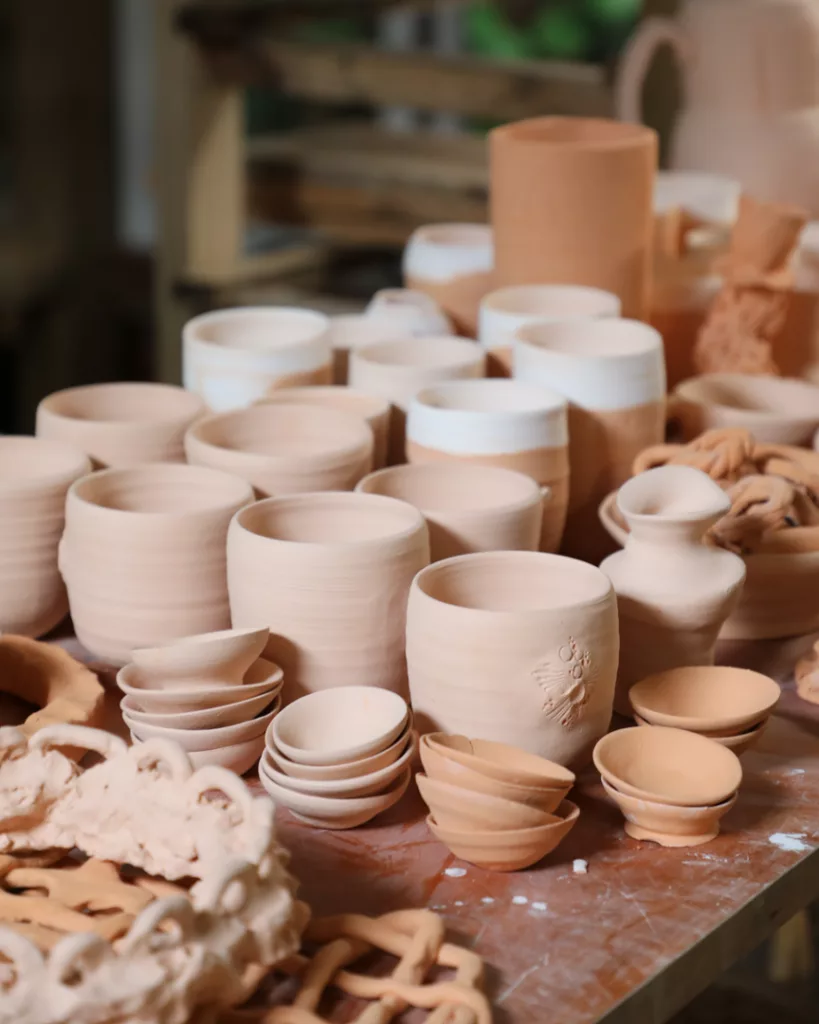



Elephant, one of Driving Creek's beloved trains, is undergoing an upgrade. Elephant was Barry Brickell’s favourite train and holds a very special place in Driving Creek’s history. The Driving Creek Engineering Team have converted Elephant to a diesel-hydraulic powered motor alongside Gavin Brickell, Barry’s brother and mechanical engineer.
Elephant was originally built by Barry as a workhorse in 1979, using salvaged and reconditioned parts. The original motor was repurposed from a Fordson diesel truck and had a 4-speed gearbox from an old Bedford truck. The gearbox was later switched to a Paragon marine gearbox that connected to a driveshaft and spline universal, allowing the same 4 speeds forward and reverse to better traverse the unique railway.
During the early years and as the train tour became more popular, an open-side passenger carriage was made to be towed by Elephant, allowing more visitors to experience the railway. Although Elephant is not used for rail tours anymore, it is still used for track work and as a towing vehicle in case of breakdowns. Its powerful engine and small size allows it to fit in the switchbacks, alongside the larger trains when towing.
Maintaining this system became very difficult and costly with the need to replace the old worn gearbox. After searching for a replacement paragon gearbox and compatible hydraulic drive to the Fordson motor proved fruitless, it was decided a complete engine replacement was necessary. As Driving Creek’s other trains have been designed or converted to a diesel hydraulic system to more effectively operate on Driving Creek’s mountain railway, it was also decided to use this opportunity to convert Elephant to hydraulics.
The recent conversion included replacing the old Fordson motor with a reconditioned Perkins engine which the engineering team converted from 24 volts to 12 for the injector and start motor. A purpose-built hydraulic tank, built in the workshop, a new hydraulic pump, hydraulic drive and sprocket were also installed.
Other modifications made to Elephant over the years have included Barry’s handmade exhaust manifold, which was adapted to fit the new engine to keep the same original aesthetic. Elephant also was upgraded with a new radiator so all three ‘big trains’ are interchangeable with one another.



*Pictures show Elephant in the workshop with Gavin, Beran and Jade, the engineering team.
Coromandel Town has a range of attractions and activities visitors can do for free we would love to share with you.
Coromandel Town is a historic town known for its mixture of coast, native forest, history and artistry. It is a haven for talented artists and craftspeople inspired by the land and seascapes. Along with its broad range of paid tourism experiences, there are free attractions that draw people here too.
Here are some of Coromandel Town’s best must-do’s, hidden gems and local favourites to add to your Coromandel escape. Please remember to care for these incredible places by leaving them as pristine as you found them and keeping to the Tiaki Promise.
Waiau Falls
Along the 309 Road lies the entrance to the Waiau Falls trail. You can walk through a beautiful lush bush to the stunning waterfall and deep pool below. If you’re feeling adventurous and keen on a refreshing plunge, this is the perfect adventure for you. The waterfall is a popular local swimming hole, so don’t forget your towel!
Getting there:
Waiau Falls is 10km from Driving Creek. To get there from Coromandel Town, head up the 309 Road towards Whitianga. Travel 7km along the 309 Road until you reach a parking space on the left hand side of the road where the track to the waterfall starts. You can also click Waiau Falls to open it in Google Maps.
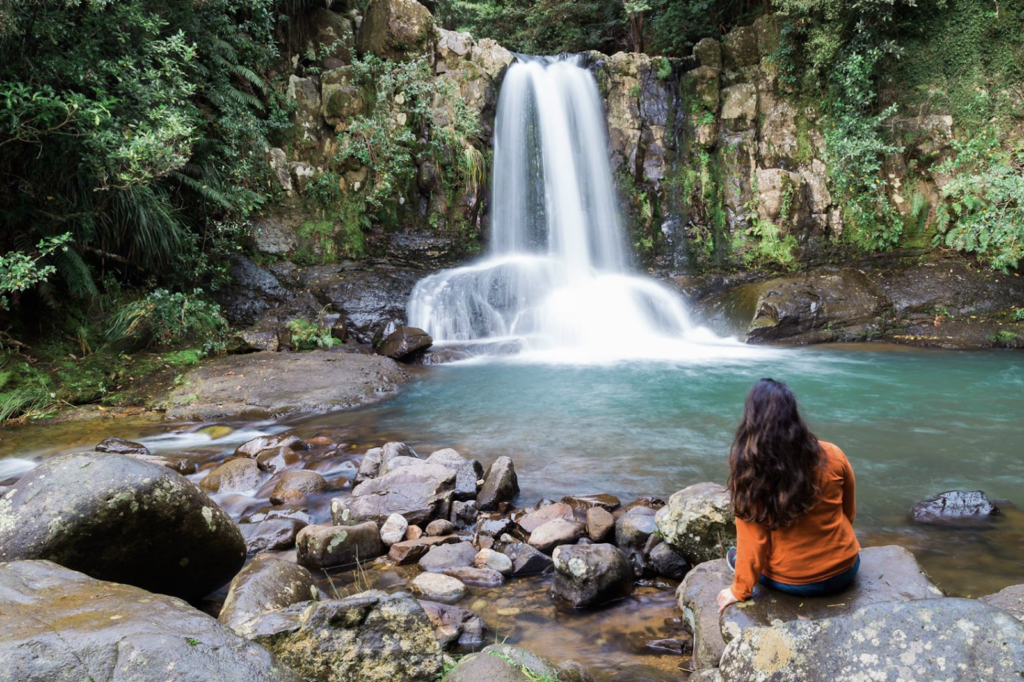

Waiau Kauri Grove
The Waiau Kauri Grove is a spectacular stand of Kauri trees that soar above the surrounding native forest, with the walkway starting 1km further along the road past Waiau Falls. These Kauri are of special significance to The Coromandel, being the largest easily accessible grove of mature Kauri in the region- they are truly magnificent.
The track is very well formed with footbridges and boardwalks, which take you close to the trees while protecting their roots. An excellent walk for nature lovers. If you are planning on walking through the Kauri Grove, please be sure to use the wash stations and keep to the tracks to protect these ancient natural taonga from kauri dieback disease. The walk takes approximately 30 minutes each way and is a must-do experience.
Getting there:
The Waiau Kauri Grove is 10.2km from Driving Creek. To get there from Coromandel Town, head to the 309 Road. Travel 7.2km along the 309 Road, 200 metres past the waterfall, until you reach a parking space on the right hand side of the road. You can also click Waiau Kauri Grove to open it in Google Maps.

Kauri Block Walk
The Kauri Block offers you a fantastic panorama of land and sea with a variety of uphills and down. The walk follows a ridge through regenerating bush and native plantings beneath the Te Kauri Pā. The track forks 10–15 minutes in.
If you head up the right-hand fork, you will reach the highest point- an old pa site that offers spectacular 360° views of ocean, islands, township and surrounding ranges. The left fork will keep you on the main track following the ridge through the bush until it emerges at Harbour View Rd. The entire walk takes one and a half hours at a gentle pace.
Getting there:
The Kauri Block Walk is 3.4km from Driving Creek and close to the Coromandel Town centre. You can access the track from Harbour View Road. Park opposite the Kauri Block Walk sign in the gravel car park, and be sure to clean your footwear at the station provided to protect the Kauri trees. You can also click Kauri Block Walk to open it in Google Maps.


Long Bay Walk
Another favourite walk of ours in Coromandel Town is from Long Bay, through Tuck's Bay and onto another Kauri Grove track. The walk is an easy 1-hr return loop along the coast with stunning ocean views and through beautiful bush, including a 1200-year-old kauri tree and many younger kauri. The walk is best done at high tide to encompass the best of both beach and bush, and offer the opportunity to cool off in the ocean afterwards. The Long Bay walk is also a spectacular sunset spot looking out across the Hauraki Gulf.
Getting there:
The Long Bay track is 5.5km from Driving Creek and starts by the Long Bay Campground. Parking is on the left hand side of the road by the beach. You can start the walk from either the north end of the beach or opposite the beach towards the forest. Clean your footwear at the easy to use shoe-cleaning station at each end of the bush section to help prevent the spread of kauri dieback disease. You can also click Long Bay to open it in Google Maps.
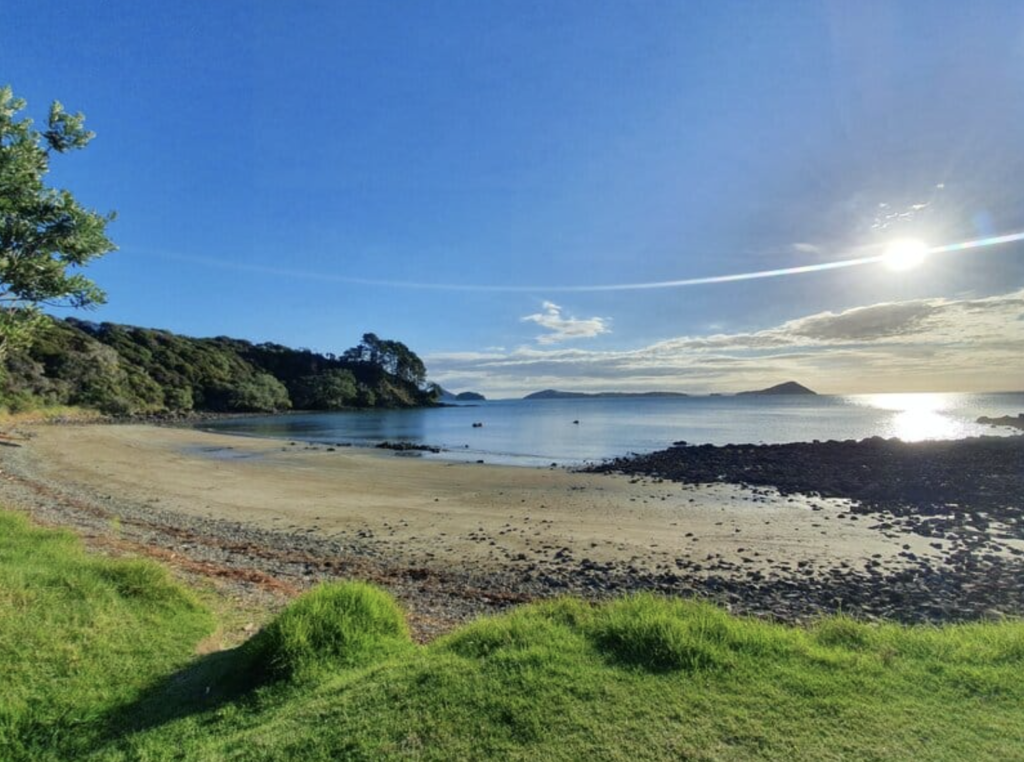

Pump Track and Bike Park
If you’re a keen biker or have a need for speed, then the Ride Coromandel Bike Park and pump track is the place for you with options for all levels. Using the network of mountain bike trails, flow trails, downhill and gravity jumps and pump tracks is free for all bikers.
The family skills area is suitable for all levels of riders. There are also grade 2, grade 3 and grade 4 descent trails and two intermediate single tracks in the Kauri Block: Ara Tuatahi at 5.5km long and Rickers Return at about 1.8km. To protect against kauri dieback disease please pass through the wash station before you ride. You can take your own bike or rent a bike from Hike & Bike Coromandel, based in Coromandel town.
Getting there:
The bike park is 4.1km from Driving Creek and based just a kilometre out of Coromandel town. You can either bike or drive there with parking available on site. You can also click Ride Coromandel Bike Park to open it in Google Maps.

Going to the Beach!
The Coromandel peninsula is most known for its golden beaches and picturesque bays that make for the perfect summer’s day. A few of our favourite beaches within an hour of Coromandel Town include Little Bay, Opito Bay, Crayfish Bay, New Chums Beach, Waitete Bay, Port Jackson and Otama Beach. Check out our previous article about the Top 6 Beaches in The Coromandel for more information.


Looking for even more activities in The Coromandel?
Head over to The Coromandel to find even more awesome activities, both free and paid, that you can experience while visiting The Coromandel to make your trip even more incredible.
The Coromandel is renowned for its picturesque golden sand beaches. Cathedral Cove, Hahei, Whangamata and Hot Water Beach are world-famous and very popular. However, The Coromandel is full of other hidden beaches that allow you to escape the crowds, so here are Driving Creek’s top 6 hidden beaches to give you a few ideas of places to visit.
While we love to share our beautiful beaches, please remember to care for them by leaving them as pristine as you found them and keep to the Tiaki Promise.
Little Bay is a small 660 metre long beach located in between Tuateawa and Waikawau. Its charming character includes a mussel buoy with books to read and swap hanging from a pohutukawa tree, and usually a pontoon floating in the water to relax on. The bay also allows freedom camping- how unreal would it be to wake up with such a stunning view right on the water?!

Getting there:
From Coromandel Town head towards Waikawau, the drive is approximately 55 minutes. The bay is located where Tuateawa Road meets Waikawau Beach Road. Directions are available on maps too.



Opito Bay is a sandy beach with a gorgeous cove tucked just around the corner. Crayfish Bay is the perfect spot to go exploring and climb over the unique rock formations that make this bay special. The water is clear and the rockpools make it an ideal spot to swim and snorkel. The rocky ledge also makes for the perfect jumping spot. There is a small ladder attached to the sides of the rocks to help you climb back up; however, be aware of the swell and the sharp rocks while getting out of the water.
Getting there:
From Coromandel Town, Opito Bay is a 45-minute drive. To get around to Crayfish Bay, walk along Opito Beach towards the Pa- roughly 100 metres before the end of the beach, you will see a faint track marked with a sign pointing you over the fence to Crayfish Bay. Climb over the fence and follow the grassy path across the farmland to Crayfish Bay.



New Chums, or Wainuiototo, is a secluded beach only accessible by foot. New Chums can be busy over the peak of summer but are mostly remote the rest of the year. The journey is a combination of rock hopping and walking through native bush including an impressive grove of Nikau, New Zealand’s native palm. When you reach the beach you are greeted with insane views, white sand, clear water and shade offered by an abundance of lush pohutukawa trees. Climb up the rugged and steep track off the small saddle between Whangapoua and New Chums to the viewpoint for unforgettable coastal scenery. Take along a ball to have a friendly game of volleyball, a book to read while soaking up the sun or a hammock to sway in the trees. The waves here are thrilling so be sure to be a confident swimmer if the swell is up; however, plenty of fun is offered by this hidden gem.
Getting there:
From Coromandel Town, drive to the nearby Whangapoua beach (roughly a 25-minute drive). Drive to the far end of Whangapoua and park in the signed area. Head along the beach, cross the stream and continue to follow the rocky shoreline until it meets the path. Follow along the track and into the bush, then down onto the beach. The walk takes approximately 30 minutes, but it is worth it for the reward waiting at the end.



Looking for a short trip out of Coromandel Town? Waitete is the perfect spot for a swim or a small escape from the town. Waitete Bay is a beautiful sandy beach hidden away from the masses. A classic Kiwi beach, great for quiet days when you want to enjoy some peace.
Getting there:
From Coromandel Town, head towards Amodeo Bay and turn left at the old sign. There's a gravel road about 200 metres long that will take you to the beautiful bay.



Port Jackson is at the northern tip of the peninsula. It is where the Coromandel Coastal Walkway is based, so if you are a fan of mountain biking or hiking, this beach is for you! The incredible coastal walk takes 3.5 hours one way to Port Charles and encompasses the full beauty and remoteness by capturing the bush, farmland and coastline of the upper Coromandel Peninsula. Be prepared for an easy gradient to begin followed by short steep sections into and out of bays along the way. Stony Bay and Fletchers Bay mark the start and end points of the track and are great places to cool off after your adventures.
Getting there:
From Coromandel, follow Colville Road north to Colville Bay. From there, take Port Jackson Road to Fletcher Bay or Port Charles Road for 20 km to Stony Bay.
For more information, head to the DOC website.


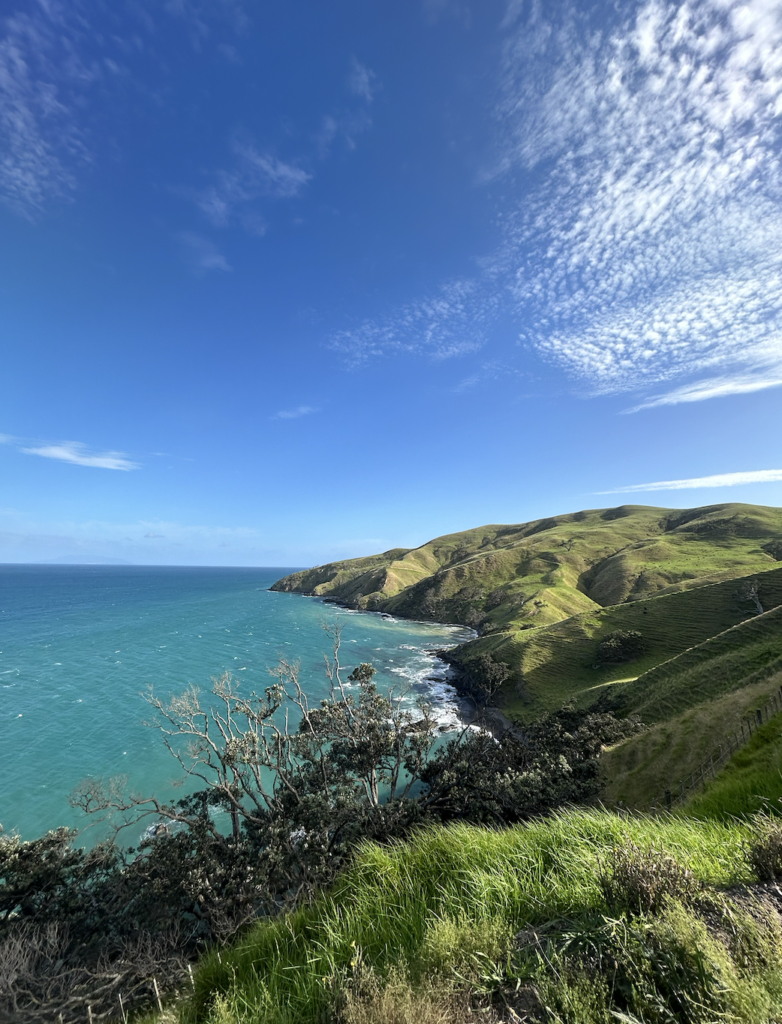
If you are in search of the perfect spot for a beach day, Otama is the place: glorious golden sand, pohutukawa trees offering shade and tame waves to swim or surf in for hours. Pack a picnic and take your hammock along for the ideal beach day. There is an estuary nearby for families with younger kids to splash in the shallow waters and sand perfect for building sand castles. It is one of the more accessible beaches and very family-friendly or ideal spot for a relaxed beach day.
Getting there:
Otama is located 35 minutes from Coromandel Town. Wind your way over the hill towards Whitianga and turn off onto Blackjack Road, in Kuaotunu. Keep heading along Otama Beach until you reach the far end where you can turn off into a car park and head down the beach access.



If you’re looking for more beaches go and check out https://thecoromandel.com/activities/beaches/ for a comprehensive collection of The Coromandel's many beaches.
Driving Creek is home to the threatened Coromandel Striped gecko also known as the Northern striped gecko.
The species is threatened and nationally vulnerable. For a while, northern striped geckos were so rarely encountered they were considered to be the 'rarest geckos in the world.' More recent survey efforts have confirmed they are on the northern Coromandel Peninsula and can be locally abundant at sites with good pest control. (NZ Herpetological Society).
Early in 2023, a Driving Creek Conservation Team member discovered a Coromandel Striped gecko just outside of the Driving Creek boundary. This prompted a visit from the Auckland Zoo herpetological team to survey the habitat of this rare native species. Luke from the Driving Creek Conservation team guided the Auckland Zoo team through a tour of the property and discussed the conservation efforts of the team. Luke also was able to show the Zoo team where he first spotted the Coromandel Striped Gecko. The group discussed habitats and survey methodologies while viewing the Driving Creek Gecko enclosures.
The Coromandel striped geckos have slender bodies and can grow up to 95 mm in size (from snout to vent) plus their tails which are longer than their body length. The geckos have tan stripes covering their length and may have fine flecks of spots. Male striped geckos have three large pointed scales on each side of the tail base that differentiate them from the females. The geckos have brown or grey eyes and have a distinctive mouth with a pink lining and orange-coloured corners. The striped gecko is similar to the Pacific gecko and goldstripe gecko however, the orange in the corners of the mouth differentiates them. (“Toropuku Inexpectatus | NZHS”)
The striped geckos are arboreal meaning they live in trees and are nocturnal- active at night. They are found inhabiting coastal forests and shrubland. In the Coromandel, they have been seen sun basking on branches and tree trunks, often with their limbs parallel to their bodies. Captive Coromandel striped geckos have been observed leaping with force and speed as a form of escape technique rather than dropping like other native geckos. (“Toropuku Inexpectatus | NZHS”)



References:
The hard work and dedication of Driving Creek’s Conservation Team is producing great results for our beautiful native forest and wildlife. We now have evidence of a thriving kiwi population in the forest that surrounds Driving Creek and overlooks Coromandel Town.
Our Conservation Team has been trapping pest animals and expanding traplines to target mustelids, possums and rats since 2019; working to protect forest on surrounding Public Conservation Land as well as our own property. The conservation department seeks to create a safe habitat for the Coromandel Brown kiwi and other native species.
Our Conservation Team uses various methods to gage kiwi numbers in our area, including a trail camera network. The cameras are triggered by movement and capture images of kiwi or other animals that pass through key points in the project area. This allows the Conservation Team to track not only the presence of kiwi but also pest species.
In late 2023, Driving Creek was again part of a region-wide kiwi call survey, the second year in a three year survey organised by Predator Free Hauraki Coromandel Community Trust. Kiwi call surveys are one way to determine the presence of adult kiwi in different areas, with a positive bias towards male kiwi due to females calling less frequently. They can also be used to estimate and compare the relative abundance of kiwi populations, and are useful for understanding long term trends.
Simply put, a kiwi call survey is performed by walking to a high ridge late at night, sitting quietly, and listening for the kiwi distinctive calls for three hours in the dark over three consecutive nights. When the Conservation Field Ranger hears a kiwi call, they record the time, direction, estimated distance of the call (distance from the listener) and the gender of the kiwi, which is identifiable by the type of call, and record it on a data sheet.
“We want to stress that our kiwi listening emphasises minimal intrusion," says the Driving Creek Conservation Team. "Our aim is to let the kiwi live as naturally as possible while we learn more about their abundance and habitat preferences in our area."
Based on two years of our kiwi survey data, we can estimate there are two breeding pairs of kiwi plus an additional male bachelor in the area. We think this is the case, as kiwi only call when they are of breeding age and searching for a mate. When a male and female kiwi call in a repetitive pattern in close proximity, we identify these as “duet calls,” which is an indicator of courting pairs of kiwi.
Even more good news is that the recent kiwi survey data shows a dramatic increase from 1.38 calls an hour in 2022 to 5.75 calls an hour in 2023. This increase highlights the positive impact of Driving Creek’s Conservation work in trapping pest animals, removing environmental weeds and protecting the local wildlife.
We are ecstatic about this result and are planning to further expand the area which is covered by traplines to remove pest animals, expanding across more Public Conservation Land. We hope that the two pairs of kiwi will breed and their chicks will make it into adulthood to continue increasing our kiwi population.
While the survey results alone are incredible, our Conservation Team also experienced a rare, heartfelt encounter with a young inquisitive male kiwi, now affectionately named ‘Squeaky.’ The young male approached a Field Ranger during a kiwi listening survey, to within touching distancing and was seemingly unfazed by the rangers presence. "This is a brilliant example of the vulnerable nature of young inquisitive kiwi, and how important it is to keep pest animals and pets such as dogs and cats out of our forests" says the Field Ranger who had the chance to share this unforgettable moment with the young kiwi.
As we celebrate this milestone at Driving Creek, we would not be able to perform our conservation work without the support of other local conservation groups such as Moehau environment group, our relationship with Te Papa Atawhai and the financial support from Waikato Regional Council to buy traps for Public Conservation Land. We also must thank all of those who visit Driving Creek’s railway, zipline and pottery activities. As a not-for-profit we are continually expanding our conservation work to better protect and enhance our native environment and wildlife, with the evidence of a thriving kiwi population being an incredible outcome that we can share with visitors to Driving Creek.



